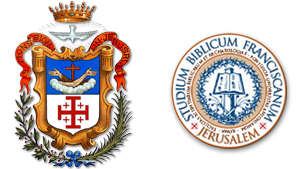...................................
[read in Italian] ![]()
The few evidence on Bernardino Amico’s life can be found in his Trattato. In the permission to print the 1609 edition, the Vicar General of the Observant Friars Minor Angelo d’Aversa calls the author «Father F. Bernardino Amico of Gallipoli of our Order» (1609, p. 2). Bernardino arrived at the Franciscan Custody of the Holy Land between 1593 and 1595. The Custody – whose birth goes back to the first General Chapter of the Friars Minor (1217), when Saint Francis sent some friars to the Holy Land – was tasked by Pope Clement VI with defending and preserving the holy places and assisting pilgrims in 1342, duties which the friars carried out during Amico’s time and still perform today.
| [click sulle immagini per ingrandirle / click on images to enlarge] |
As Bernardino himself wrote in his second edition dedication to the Grand Duke of Tuscany Cosimo II de’ Medici in 1596, he was «President of the Holy Sepulchre of Our Lord Jesus Christ» (1620, fol. ¶2r and Plans, p. 38), which was an important charge because the President could act as the Custos, at that time being Fra Gianfrancesco della Salandra, mentioned twice by Amico (1620, fols. P1r and Pp1r). Moreover, Fra Bernardino was in charge of the Guardianship of Bethlehem, as written in his comment to the plan of Church of the Nativity: «This is also called the room of St. Jerome, in which I dwelt for 6 months, when I was Guardian there, unworthy though I was» (1620, fol. B1r and Plans, p. 46). Finally, in 1597, most likely after the arrival of the new Custos Fra Evangelista of Gabbiano, Amico was sent to Cairo to take care of the restoration of The Matarieh Church: «More than half of the said church was roofless, and in front of it there was no wall but only a wooden railing, for which reason the Most Rev. Fr. Guardian of Mount Sion sent Father Bernardine of Gallipoli [confirming his skills as an architect] as President and confessor of the Christian merchants, who lived in Cairo, to see if with the help of these merchants repairs could be made to the ruins of the said Church» (1620, fol. L2v and Plans, p. 68; see also plate 13).
| [click sulle immagini per ingrandirle / click on images to enlarge] |
During his stay in the Holy Land the friar, who had probably attended archaeological studies in Italy, conceived the ambitious project of drawing plans and elevations of the «Sacred Edifices of the Holy Land […] according to the rules of the perspective and exact measure of the size» (1609 and 1620, title page and Plans, p. 36). Back in Italy by 1598, he was committed to publish his drawings, entrusting the engraving to the well-known Italian painter Antonio Tempesta. The permission to print is dated 20th June 1609: it was granted by the Vicar General Fra Angelo d’Aversa and put on the back of the title page together with the imprimatur signed by the Dominican Ludovico Istella, Theologian of the Pontifical Household, and Tommaso Pallavicini (1609, p. 2). However, the publishing of the Trattato cannot have taken place before the end of March 1610, since the dedication to King Philip III of Spain and his ambassador Francisco Ruiz de Castro is dated 28th March 1610 (1609, p. 3).
